Elizabeth Cady Stanton Worksheets
Do you want to save dozens of hours in time? Get your evenings and weekends back? Be able to teach about Elizabeth Cady Stanton to your students?
Our worksheet bundle includes a fact file and printable worksheets and student activities. Perfect for both the classroom and homeschooling!
Resource Examples
Click any of the example images below to view a larger version.
Fact File
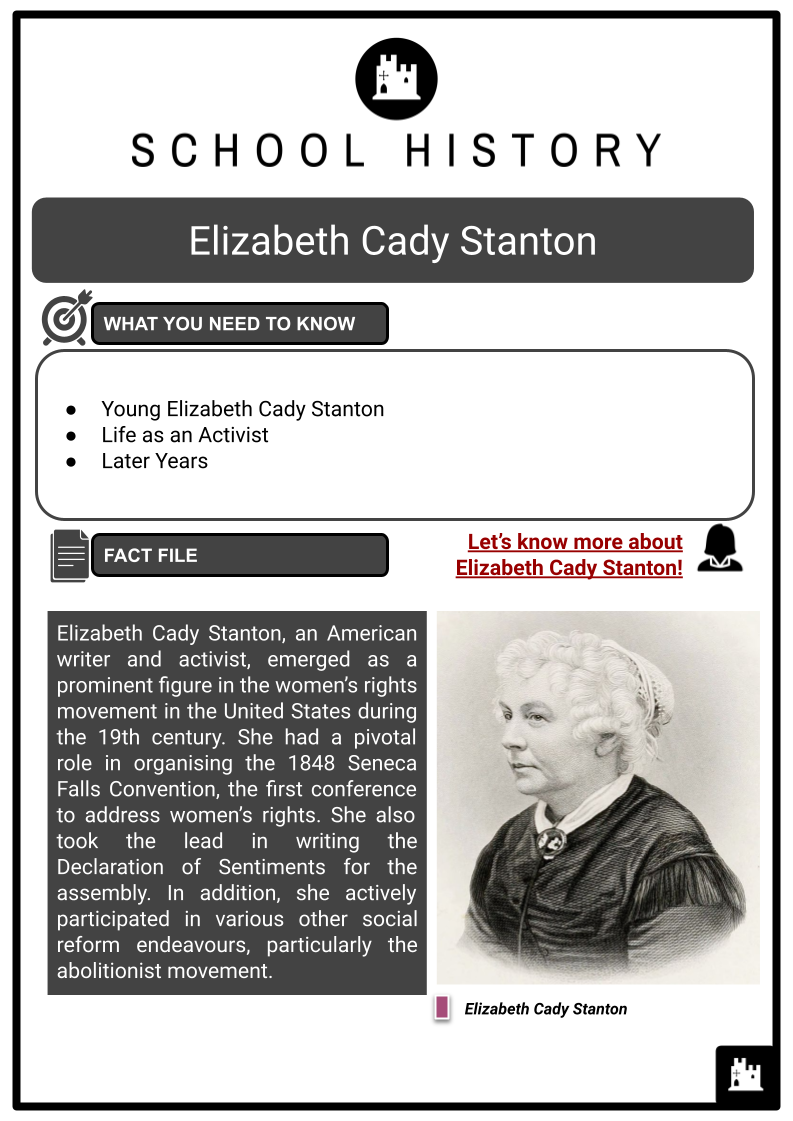
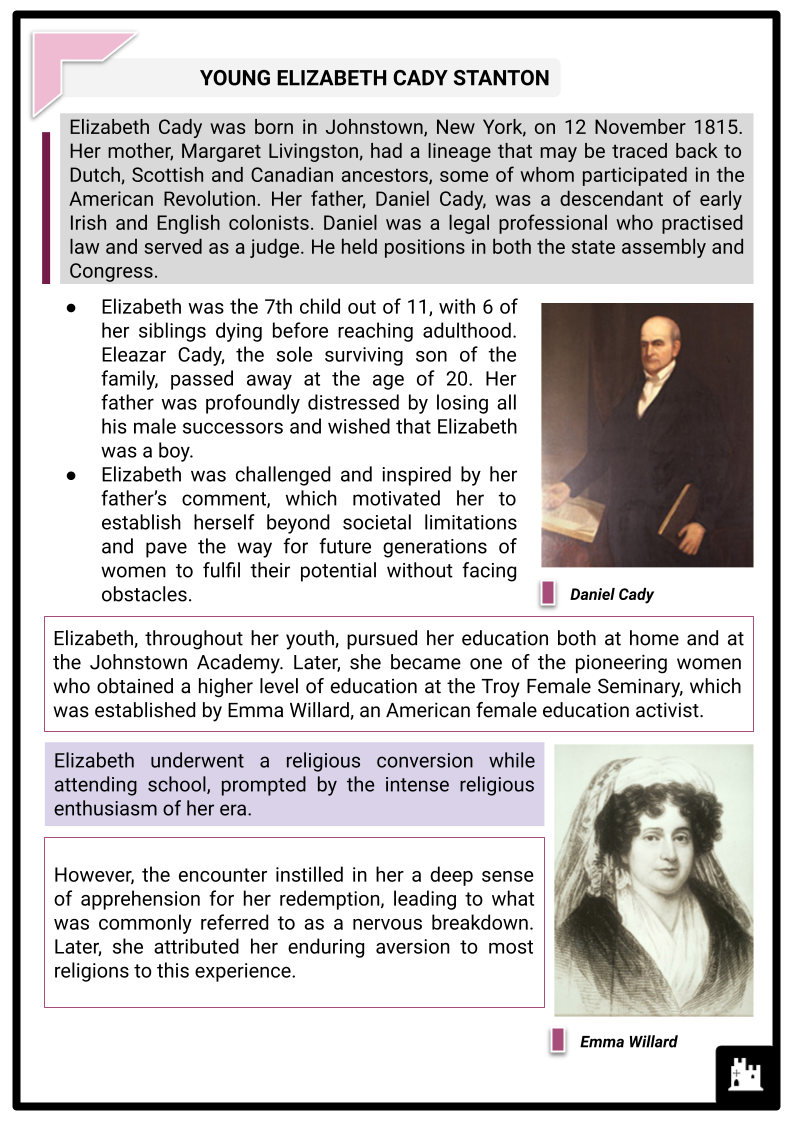
Student Activities
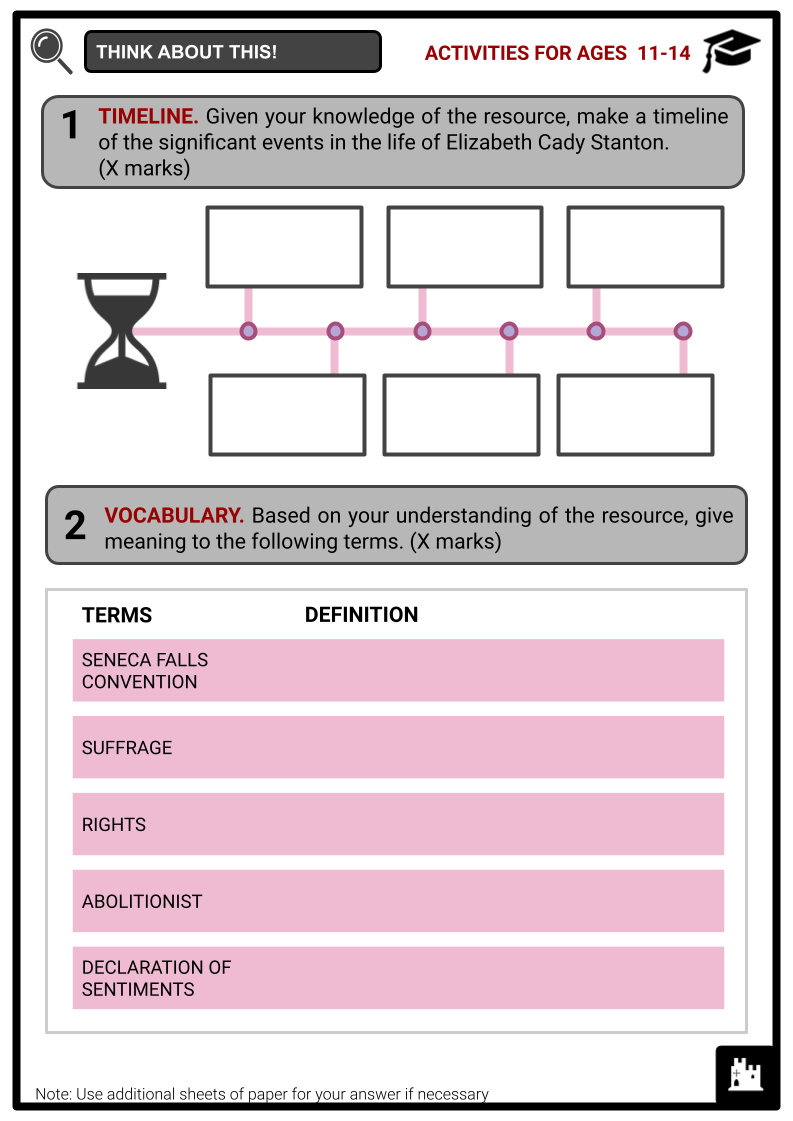
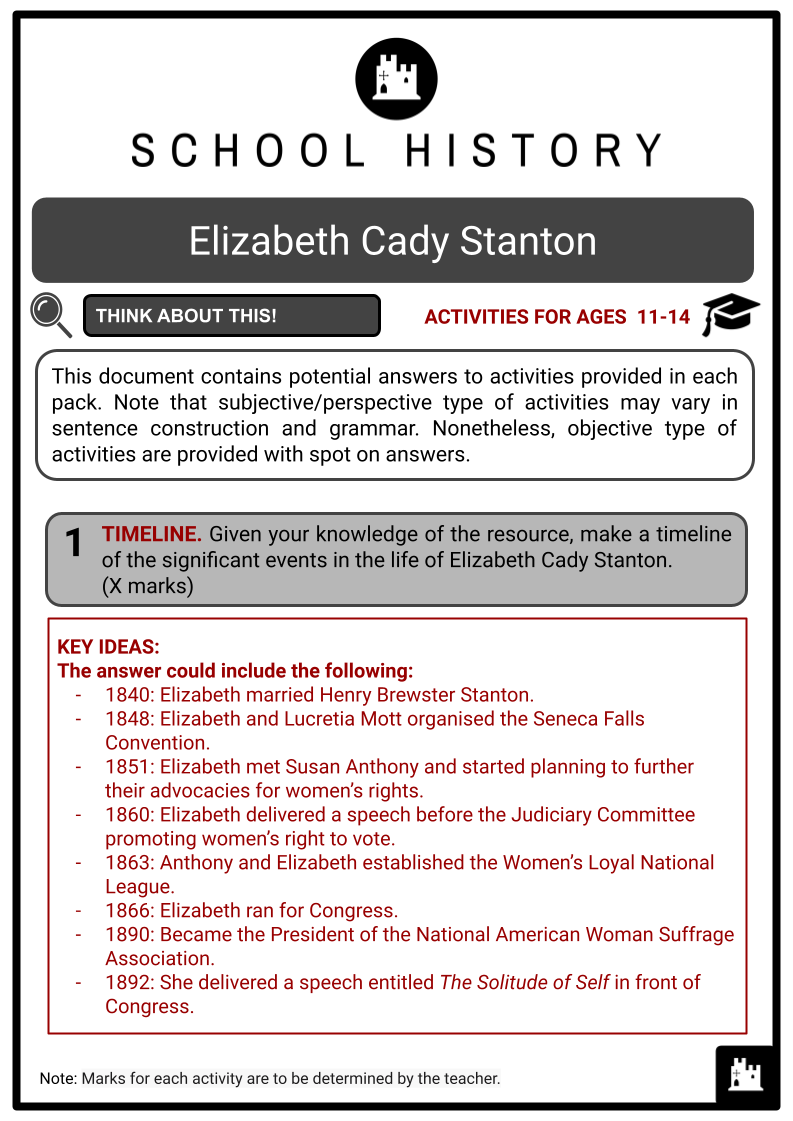
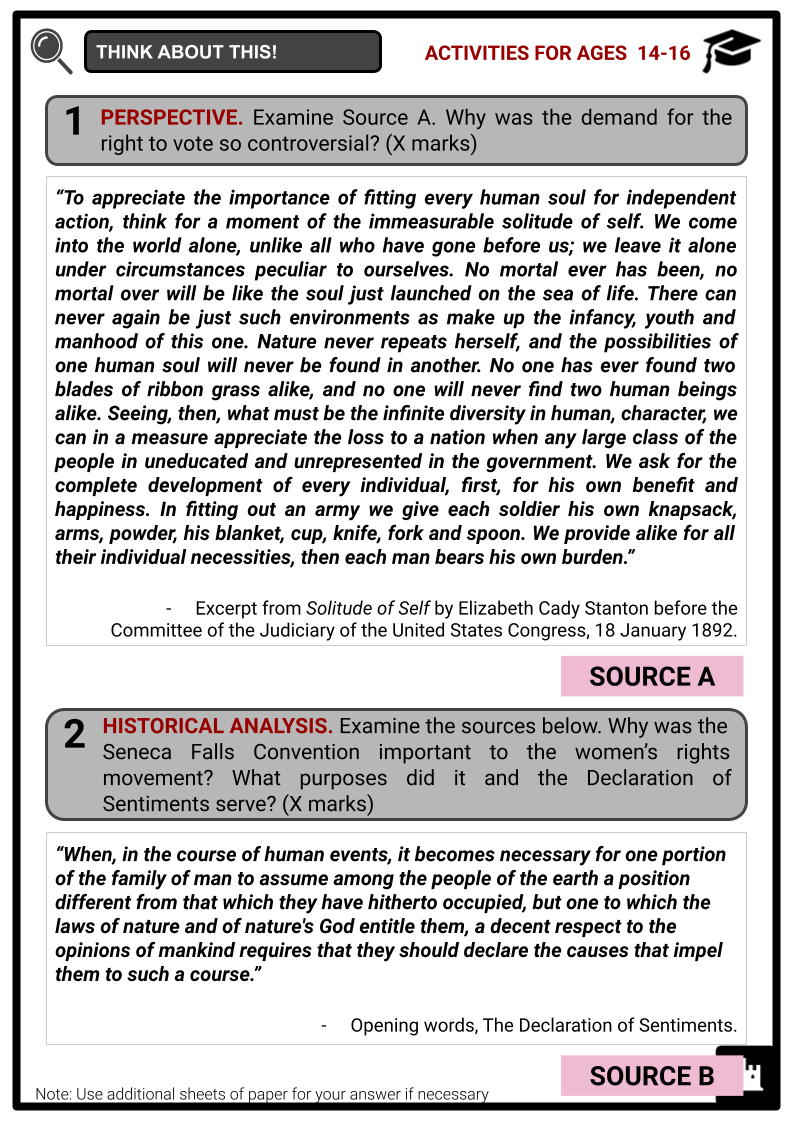
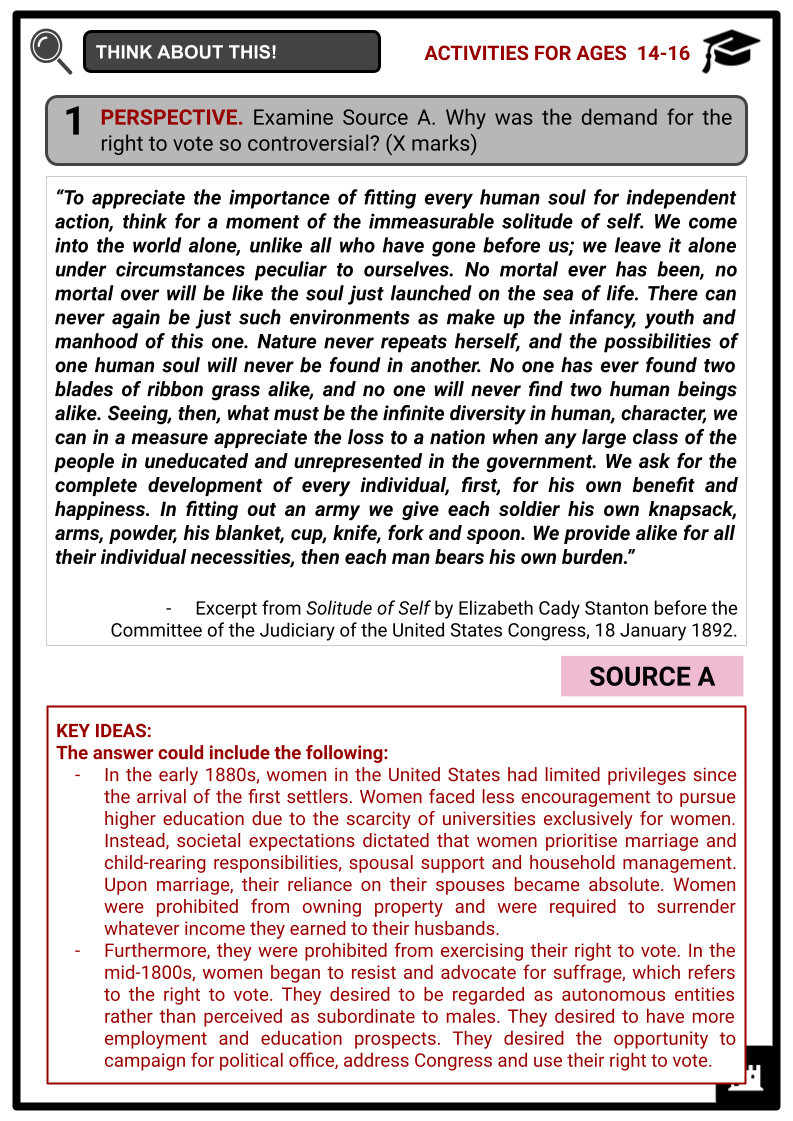
Summary
- Young Elizabeth Cady Stanton
- Life as an Activist
- Later Years
Key Facts And Information
Let’s know more about Elizabeth Cady Stanton!
Elizabeth Cady Stanton, an American writer and activist, emerged as a prominent figure in the women’s rights movement in the United States during the 19th century. She had a pivotal role in organising the 1848 Seneca Falls Convention, the first conference to address women’s rights. She also took the lead in writing the Declaration of Sentiments for the assembly. In addition, she actively participated in various other social reform endeavours, particularly the abolitionist movement.
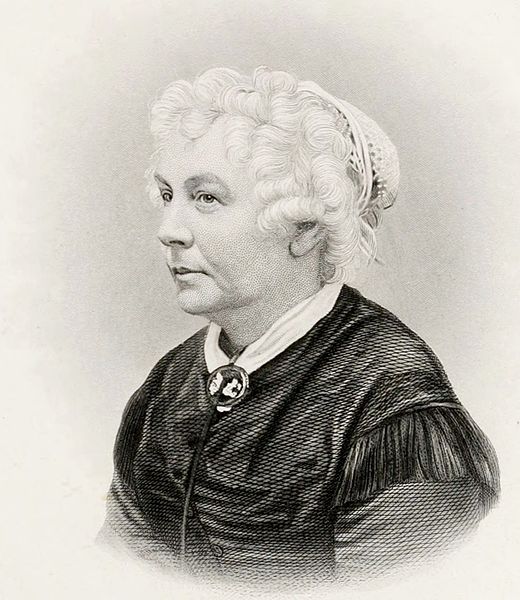
YOUNG ELIZABETH CADY STANTON
- Elizabeth Cady was born in Johnstown, New York, on 12 November 1815. Her mother, Margaret Livingston, had a lineage that may be traced back to Dutch, Scottish and Canadian ancestors, some of whom participated in the American Revolution. Her father, Daniel Cady, was a descendant of early Irish and English colonists. Daniel was a legal professional who practised law and served as a judge. He held positions in both the state assembly and Congress.
- Elizabeth was the 7th child out of 11, with 6 of her siblings dying before reaching adulthood. Eleazar Cady, the sole surviving son of the family, passed away at the age of 20. Her father was profoundly distressed by losing all his male successors and wished that Elizabeth was a boy.
- Elizabeth was challenged and inspired by her father’s comment, which motivated her to establish herself beyond societal limitations and pave the way for future generations of women to fulfil their potential without facing obstacles.
- Elizabeth, throughout her youth, pursued her education both at home and at the Johnstown Academy. Later, she became one of the pioneering women who obtained a higher level of education at the Troy Female Seminary, which was established by Emma Willard, an American female education activist.
- Elizabeth underwent a religious conversion while attending school, prompted by the intense religious enthusiasm of her era.
- However, the encounter instilled in her a deep sense of apprehension for her redemption, leading to what was commonly referred to as a nervous breakdown. Later, she attributed her enduring aversion to most religions to this experience.
- Elizabeth enjoyed travelling to New York. There, she met Henry Brewster Stanton, a well-known advocate for the abolition of slavery. The two fell in love and married in 1840 despite Daniel’s opposition.
- Henry Stanton apprenticed in law under his father-in-law until 1843, at which point the Stantons relocated to Boston (Chelsea), Massachusetts, where Henry became a member of a law practice.
- Elizabeth relished the social, political and intellectual stimulation that accompanied a continuous series of abolitionist gatherings throughout her time in Boston.
- She was influenced by notable figures such as Frederick Douglass, Ralph Waldo Emerson and William Lloyd Garrison.
- In 1847, the Stantons relocated to Seneca Falls, New York, situated in the Finger Lakes region. Elizabeth’s father purchased their house, which is now included in the Women’s Rights National Historical Park.
- The couple had a total of seven children. During that period, giving birth was regarded as a topic that required careful and sensitive handling.
- Elizabeth adopted a distinct strategy by hoisting a flag in front of her residence at the arrival of her newborn. She opted for a red flag to signify the birth of a boy and a white flag to symbolise the birth of a girl.
- Many believed that the couple used birth control methods due to the gap in years of their children’s birth. During this period, Stanton believed in ‘voluntary motherhood’ wherein women should have command over their sexual relationships and childbearing.
- Elizabeth encouraged her children to pursue their interests and dreams and not be dictated by anyone. Both Elizabeth and Henry were abolitionists, but Henry, like Elizabeth’s father, was against the idea of female suffrage.
LIFE AS AN ACTIVIST
- In 1840, the Stantons participated in the World Anti-Slavery Convention held in London. Stanton was disappointed by the Convention’s male delegates, who decided to prohibit women from participating, even if they had been designated delegates of their separate abolitionist societies. The men mandated that the women occupy a distinct area, concealed by curtains, away from the main activities of the Convention.
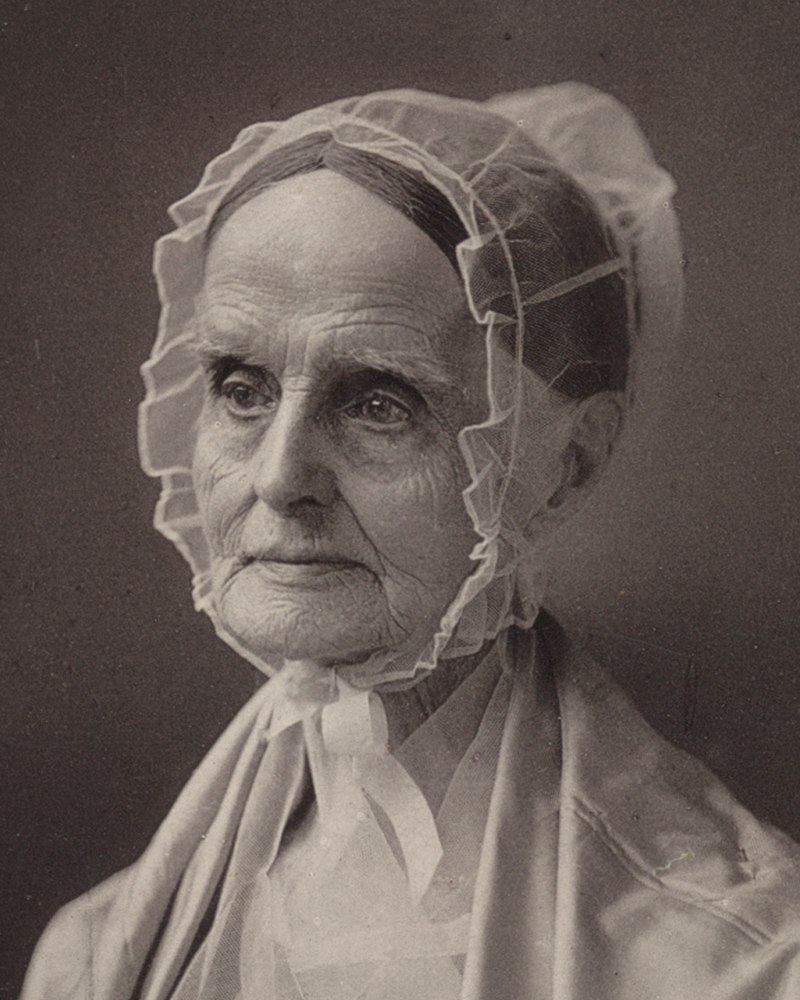
- William Lloyd Garrison, a renowned American abolitionist and advocate for women’s rights, arrived late to the Convention. He chose not to sit with the males but instead to sit with the ladies.
- Lucretia Mott, a Quaker preacher, abolitionist and supporter of women’s rights, was among the women chosen to serve as a delegate.
- Despite the significant age difference between Mott and Stanton, they rapidly formed a strong and lasting friendship, with Stanton avidly gaining knowledge from the more seasoned campaigner.
- During her trip to London, Stanton got to listen to Mott deliver a sermon in a Unitarian chapel.
- This was the first instance in which Stanton had witnessed a woman giving a sermon or speaking publicly. Stanton subsequently attributed this conference to directing her attention towards women’s rights.
- In 1848, Stanton and Mott reunited and initiated preparations for a conference advocating for women’s rights, which was scheduled to take place in Seneca Falls.
Seneca Falls Convention
- The Seneca Falls Convention was the inaugural convention dedicated to women’s rights. Stanton played a crucial role in organising the convention alongside Mott and Martha Coffin Wright.
- The convention was dedicated to the analysis of the social, civil and religious status and entitlements of women. It consisted of six sessions, encompassing a lecture on law, a comedic presentation, and several talks regarding the societal role of women.
- Stanton and the Quaker women submitted two prearranged documents, namely the Declaration of Sentiments and a corresponding set of resolutions, to be discussed and revised before being offered for signatures.
- The Declaration of Sentiments is a written agreement that was endorsed in 1848 by a group of 68 women and 32 men, totalling 100 individuals out of around 300 participants at the inaugural women’s rights conference that was planned and executed by women.
- A contentious discussion arose concerning the enfranchisement of women, with Mott and others advocating for its elimination. However, Frederick Douglass, the only African-American participant at the conference, persuasively pushed for its inclusion, resulting in the retention of the suffrage resolution. A total of 100 out of around 300 guests, predominantly women, signed the document.
- Stanton’s Declaration of Sentiments deliberately employs comparable terminology to that of the United States Declaration of Independence authored by previous United States President Thomas Jefferson. This choice was not accidental or submissive.
- Following Jefferson’s example, Stanton drew a connection between America’s independence from Britain and the concept of ‘patriarchy’ to highlight their shared injustice as forms of control that could be liberated from.
“Nature has given woman the same powers, and subjected her to the same earth, breathes the same air, subsists on the same food, physical, moral, mental and spiritual. She has, therefore, an equal right with man, in all efforts to obtain and maintain a perfect existence.” - Frederick Douglas
Stanton and Susan Anthony
- During her visit to Seneca Falls in 1851, Susan B. Anthony became acquainted with Stanton through Amelia Bloomer, a common acquaintance who advocated for women’s rights. Stanton commenced writing regularly on behalf of women’s rights, including pushing for women’s right to own property after marriage.
- Stanton frequently assumed the role of the writer due to her responsibility of caring for her children. At the same time, Anthony took on the tasks of strategising and public speaking in this very productive partnership.
- Anthony organised a petition drive in 1853 in New York State to advocate for enhanced property rights legislation specifically aimed at married women. As part of the presentation of these petitions to the legislature, Stanton delivered a speech in 1854 before a joint session of the Judiciary Committee.
- In her speech, Stanton argued that granting women voting rights was necessary to safeguard their recently acquired property rights.
- In 1860, Stanton delivered another speech before the Judiciary Committee, this time in front of a sizable audience in the assembly chamber. She asserted that granting women the right to vote was the sole means of safeguarding married women, their children and their worldly possessions.
- In 1852, Stanton had already provoked opposition from traditionalists at the women’s temperance conference by calling for a woman’s entitlement to divorce an alcoholic spouse.
- During her speech at the Tenth National Women’s Rights Convention in 1860, which lasted for an hour, she delved deeper into the topic, sparking an intense debate that occupied a whole session. Stanton and Anthony achieved significant reforms, including granting women the right to custody of their children after divorce and providing economic rights to married women and widows. They had started efforts to initiate reform on New York’s divorce legislation when the Civil War commenced.
Women's Loyal National League
- In 1863, Anthony relocated to the Stantons’ residence in New York City, where the two women established the Women’s Loyal National League.
- The organisation was the inaugural national political group for women in the United States. The league conducted the most extensive petition campaign in the country’s history at that time to eradicate slavery.
- The petition effort played a crucial role in facilitating the enactment of the Thirteenth Amendment, effectively abolishing slavery. The league dissolved in 1864 as it became certain that the amendment would be ratified.
- While the league’s primary goal was to end slavery, it explicitly expressed its support for political equality for women. This was evident in a resolution passed during its inaugural convention, which advocated for equal rights for all individuals, regardless of colour or gender.
American Equal Rights Association
- Stanton and Anthony contested the inclusion of the term ‘male’ in the version presented to the states for approval. After Congress was unsuccessful in eliminating the language, Stanton declared her intention to run for Congress in October 1866, becoming the first woman to do so.
- Running as an independent candidate, she received a mere 24 votes. However, her candidature stimulated discussions about women occupying public office, distinct from the suffrage movement.
- The American Equal Rights Association was formed as a consequence, but it disbanded in 1868 due to a division among its members. Some members endorsed the 14th Amendment, which aimed to grant rights to Black males but also introduced the term ‘male’ into the Constitution for the first time. On the other hand, Stanton and Anthony, along with others, were resolute in their commitment to prioritise women’s suffrage.
- The National Woman Suffrage Association (NWSA) was established by those who advocated for their stance, with Stanton assuming the role of president. The American Woman Suffrage Association (AWSA), a rival organisation, was established by different individuals, causing a division within the women’s suffrage movement and impacting its long-term strategic goals.
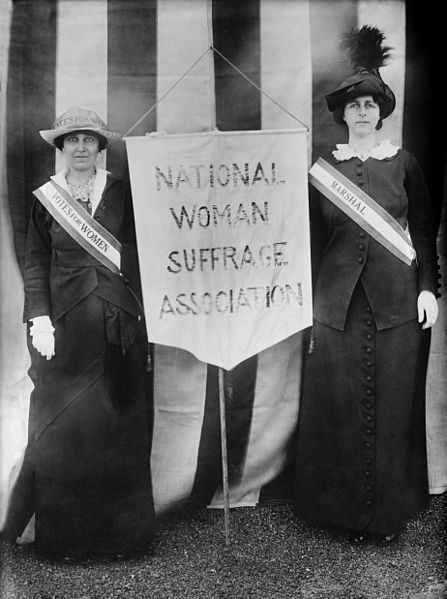
- In December 1872, Stanton and Anthony individually composed New Departure memorials addressed to Congress and were subsequently called to present their memorials to the Senate Judiciary Committee.
- This development prominently elevated the issues of women’s suffrage and officeholding on Congress’s agenda, notwithstanding the ultimate rejection of the New Departure programme.
- An amendment was proposed in 1878, and Stanton provided testimony. The Senators’ rudeness, as they read newspapers or smoked while women advocated for the right to vote, incensed her. From 1878 to 1919, the Senate received a new suffrage bill annually.
- Meanwhile, the AWSA directed its focus towards the states but achieved limited success until 1890, when the territory of Wyoming joined the United States as a state that granted suffrage rights.
- Upon the merger of the NWSA and the AWSA in 1890, Stanton assumed the presidency of the newly formed National American Woman Suffrage Association. Despite acting as president, she strongly criticised the organisation’s course.
- The movement aimed to get support from the southern region by partnering with individuals who opposed any federal intervention in state restrictions on voting rights. This strategy defended women’s right to vote by proclaiming their superiority.
- In 1892, she delivered a speech titled The Solitude of Self in front of the members of Congress. In 1895, she released her memoirs titled Eighty Years and More. In 1898, she collaborated with others to produce a contentious critique of how religion treats women, titled The Woman’s Bible. As a result, her views on religion became more critical.
- The controversy surrounding that book caused many individuals in the suffrage movement to become estranged from Stanton.
- The more conservative majority of suffrage campaigners were worried that Stanton’s sceptical free thought notions might potentially undermine the crucial support for suffrage.
LATER YEARS
- Upon Stanton’s return from her last voyage to Europe in 1891, she relocated to New York City and resided with two of her single adult children, who shared a household. She intensified her support for educated suffrage, a cause she had long championed. In 1894, she engaged in an argument with William Lloyd Garrison Jr., an American abolitionist, regarding this matter within the Woman’s Journal publication.
- Harriot Stanton Blatch, the daughter of Stanton, who was actively involved in the women’s suffrage campaign in Britain at that time and would later become a prominent role in the United States movement, was troubled by the opinions voiced by Stanton during this debate.
- During her later years, Stanton developed a keen interest in initiatives aimed at establishing cooperative communities and workplaces. In 1898, Stanton released her memoirs, Eighty Years and More, where she portrayed the self-image she wanted to be remembered by.
- Stanton passed away in New York City on 26 October 1902, which was 18 years before women obtained the right to vote in the United States under the Nineteenth Amendment to the United States Constitution. The medical report indicated that Stanton’s death was attributed to cardiac failure.
- Elizabeth Cady Stanton is primarily recognised for her significant involvement in the women’s suffrage movement. However, she also played a crucial role in securing property rights for married women, advocating for equitable guardianship of children, and advocating for more lenient divorce rules. These amendments enabled women to terminate marriages characterised by spousal or child abuse.
Frequently Asked Questions
- Who was Elizabeth Cady Stanton?
Elizabeth Cady Stanton advocated for women's suffrage, the abolition of slavery, and women's rights in the United States.
- What were Elizabeth Cady Stanton's major contributions to the women's rights movement?
Stanton was pivotal in advocating for women's suffrage and drafting the Declaration of Sentiments, presented at the Seneca Falls Convention in 1848, and co-founded the National Woman Suffrage Association in 1869.
- What was the Seneca Falls Convention, and what was Stanton's role?
The Seneca Falls Convention was the US's first women's rights convention. Stanton, Lucretia Mott, and others organised it and co-authored the Declaration of Sentiments, which called for women's equality in various aspects of life.
